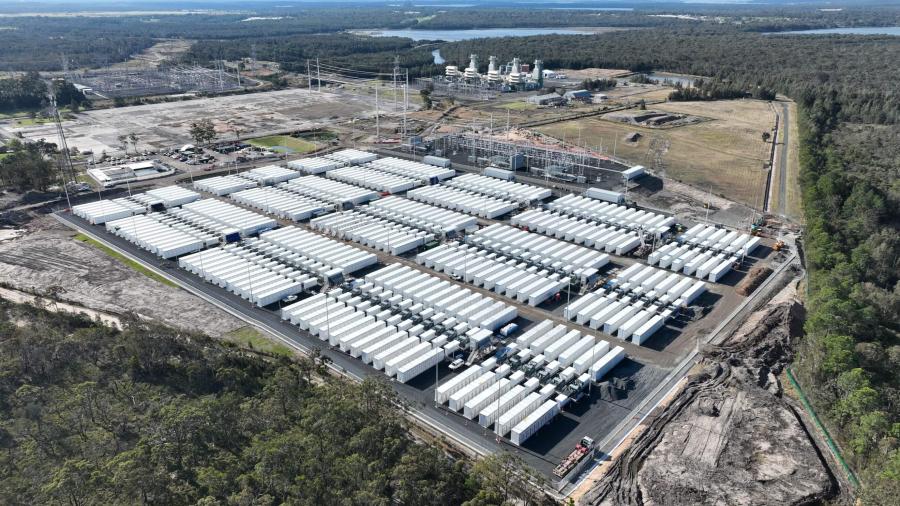Most powerful battery connected to grid as battery storage demand grows

Image credit: Akaysha Energy / EnergyCo
This month marked a milestone in Australia’s energy transition, with our most powerful battery unit connected to the main grid.
The Waratah Super Battery works to stabilise the grid, preventing blackouts and their associated costs. Its capacity is 850 megawatts.
The Waratah Super Battery sits on the former site of the Munmorah coal-fired power station on the NSW Central Coast. The location was deliberately chosen to ensure industrial land was being used after the power station closed. It is also close to existing power lines and a substation, which minimised impact to the community.
The NSW Government says the project will have a stabilising impact on the grid, with the battery supporting wind and solar generation, the cheapest form of electricity generation. The NSW Government also says the project will help prevent outages and their associated costs and help increase competition.
Further stability will be added to the grid with the completion of the 700 MW Eraring battery. This battery will be located on the site of the Eraring Power Station, due to close in 2027. The Net Zero Economy Authority are working with the local community around Eraring and the Hunter in the lead up to the closure of the power station.
The connection of the Waratah Super Battery to the grid comes after increasing demand for household batteries, fuelled by rebates offered under the Federal Government’s Cheaper Home Batteries Program.
According to the Climate Council, 1 in 2 Australians are seeking to install a household battery alongside new or existing rooftop solar. Home batteries allow electricity from solar to be stored and used by the household when they need it.
Installing two million more batteries in homes and businesses by 2030 could collectively save Australians more than $4 billion on their power bills every year, says the Climate Council.
The rollout of large battery projects and the increasing demand of household batteries will continue to see our energy system transform, working towards the 2050 goal of net zero.
